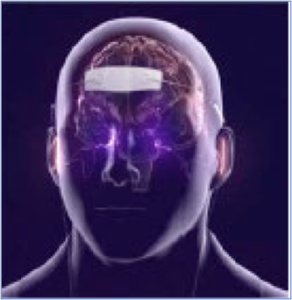Devices to Treat ADHD: Do They Work?
Health Letter, January 2023
By Michael T. Abrams, M.P.H., Ph.D.
 |
 |
| Source: FDA. De Novo Classification Request for Monarch eTNS. | Source: FDA. De Novo Classification Request for EndeavorRx.. |
Two milestones were recently reached by the U.S. Food and Drug Administration (FDA) regarding purported treatments for attention-deficit hyperactivity disorder (ADHD). In 2019, the FDA authorized for marketing the first medical device to treat ADHD — a non-invasive facial nerve stimulator. In 2020, the first video game was similarly authorized as an ADHD therapy by the agency. Accordingly, these two first-in-class devices are now fully available for purchase (via prescription) in the U.S. Unfortunately, close inspection of the underlying clinical trial data shows that the effectiveness of both devices to treat ADHD remain quite uncertain, and the safety of the nerve stimulator also seems questionable.
Nerve stimulation to treat ADHD
The Monarch external Trigeminal Nerve Stimulation (eTNS) system was authorized for marketing by the FDA for the treatment of ADHD in patients aged 7 to 12 years who are not taking prescription medications to treat their ADHD. The device is intended for adult-supervised, daily use at home during periods of sleep. It is composed of a mobile-phone-sized pulse-generator device with an electronic lead and patch that attaches to the forehead.
The device is purportedly designed to stimulate “multiple brain structures implicated in ADHD” via low electrical pulses to the facial/forehead endings of the trigeminal nerve (the nerve that controls sensation and muscle function in the face).
Data from two clinical trials were submitted to the FDA to support marketing authorization of this device.
Study 1 was an open-label (not blinded) trial on 24 children aged 7 to 14 years with moderate-to-severe ADHD. Subjects had to refrain from ADHD medication use throughout the eight-week trial. Follow-up evaluations included reports from clinicians and teachers. Those enrolled were 92% male, 88% had combined-type ADHD ( ADHD that involves marked problems with both inattention and hyperactivity) and 46% also had oppositional defiant disorder.
A total of 13 adverse events occurred during the trial, including one patient who experienced eye twitching and two who experienced headaches, both possibly related to the treatment. Separately, the FDA review summary also reported the following most frequent adverse effects observed during this trial: trouble concentrating (92%), trouble sitting still (71%), poor concentration (71%), feeling nervous or hyper (58%), poor memory (46%), irritability (42%) and trouble sleeping (29%).
After eight weeks of treatment with the eTNS system, ADHD rating-scale scores (higher is worse) dropped markedly from 33 to 17. Unfortunately, this trial had no controls and was open-label, so placebo and time effects may explain the clinical improvement that was observed.
Study 2 was fully blinded, randomized and included a sham (fake) control procedure. The sham device was identical to the real one, but the stimulating current was dissipated through an internal resistor rather than transferred to the forehead. Treatments in this second study were again nightly, but the follow-up period was just four weeks. Sixty-two subjects were enrolled and randomized to the treatment or sham condition. As was the case for Study 1, subjects were asked to not use medications during Study 2. The subjects were aged 8 to 13 years, 65% male, 63% combined-type ADHD and 32% with oppositional defiant disorder.
Study 2 revealed no serious adverse events, but several of the most common adverse events (see Table, below) were more evident in those who received treatment with the true eTNS system.
Table. Distinguishing Adverse Events Related to eTNS treatment for ADHD
| Adverse Event | True Treatment (n=32) (%) | Sham Treatment (n=30) (%) |
|---|---|---|
| Drowsy | 22 | 13 |
| Increased appetite | 19 | 7 |
| Clenching teeth | 13 | 7 |
| Fatigue | 13 | 3 |
| Headache | 13 | 3 |
| Frequent urination | 6 | 0 |
| Skin rash | 6 | 0 |
| Nightmares | 6 | 3 |
Study 2 revealed that the average ADHD severity rating-scale score declined from 34 to 23 points in the treated group and from 34 to 28 points in the sham group, suggesting a “medium” treatment effect using basic statistical methods.
Based on these findings, the FDA granted marketing authorization for the eTNS system as a treatment option for ADHD in children.
A paper published in the June 2022 issue of the PsyCh Journal presented a review of non-invasive neurotherapeutics (that is, neurofeedback approaches commonly coupled with electroencephalography or functional imaging, and brain stimulation approaches including the eTNS system). That review noted specifically that the eTNS system was the only FDA-authorized brain-stimulating device for ADHD. The review further detailed the history of functional-brain-mapping and related neurotherapeutic studies pertaining to ADHD, which have been progressing but have yet to yield any promising treatments. Accordingly, this scholarly review concluded that such ADHD interventions remain in their “infancy.”
Video game therapy for ADHD
In 2020, the video game EndeavorRx was authorized for marketing by the FDA as a prescription treatment to “improve attention function as measured by computer-based testing in children ages 8-12 years old with primarily inattentive or combined-type ADHD.” EndeavorRx uses a tablet computer to engage patients in an interactive experience that “leverages art, music, storytelling, and reward cycles.” The prescribed regimen is approximately 25 minutes per day, five days a week.
Data from two brief clinical trials involving just over 600 children were submitted to the FDA to support marketing authorization of this device.
STARS-ADHD was a multi-center, randomized, double-blind, controlled study. It involved 348 children aged 8 to 12 years diagnosed with ADHD that included inattention (72% combined-type ADHD). Subjects were randomized to EndeavorRx (180 subjects) or a control treatment (168 subjects). The control condition mimicked the game-play of the EndeavorRx, but it changed some of the presented graphics, and it did not adapt the flow of the game to the player’s responses. (Such game-flow adaptations are presumably designed to train patients per EndeavorRx’s proprietary feedback algorithms).
The primary outcome for this study was the score on a rather simple computer test known as the Test of Variables of Attention (TOVA) Attention Performance Index (API), which measures selective and sustained attention and corresponding reaction time variability to computer prompts.
No serious adverse events were reported in the STARS-ADHD trial, and only a few minor-to-moderate adverse events were evident, mostly in the EndeavorRx group: decreased tolerance for frustration (3%), headache (2%) and emotional reaction (1%).
TOVA API scores were significantly higher (better) in the EndeavorRx group than in the control group, but only by an average of 1 point. Moreover, the FDA noted that the TOVA API scores numerically, but not significantly, favored EndeavorRx treatment.
A separate STARS-adjunct trial used an open-label design and exposed each of 236 subjects to one month of EndeavorRx treatment followed by one month off that treatment and then a final month of EndeavorRx treatment. Subjects were aged 8 to 14 years, had ADHD with inattention or combined-type, and 55% were using stimulant medication for their ADHD throughout the trial.
Results across the three months of the STAR-adjunct trial showed statistically significant declines in ADHD impairment rating-scale scores averaging from 0.5 to 0.7 (at the beginning of the trial those scores ranged from 32 to 38), and those score improvements were loosely correlated to measures of improved academic performance at one month. These results, however, are difficult to interpret because the effects were small, the trial was short-lived, and all subjects knew they were exposed (because the design was open-label) to the treatment for two of the three months of the trial.
Still, the two studies constitute much of the pivotal information the FDA used to grant marketing authorization for EndeavorRx.
A paper published in the Jan. 13, 2021, issue of Evidence-based Practice in Child and Adolescent Mental Health considered the implications of EndeavorRx’s marketing authorization and was very critical of that device’s alleged effectiveness and of the FDA review process. The paper detailed the many deficiencies in the standards used for the marketing authorization of EndeavorRx and more generally in the evidence supporting “cognitive training,” the theory underlying EndeavorRx, as a plausible method to treat ADHD. The paper authors’ assessment was unequivocal:
A review of these standards and the evidence supporting cognitive training in
general, and the new videogame that received recent FDA clearance (EndeavorRXTM) specifically, revealed an overall lack of support for this approach to treatment. There are multiple psychosocial and pharmacological treatment options with much more evidence supporting their effectiveness than any commercially available cognitive training program.
Moreover, this publication concluded by suggesting that the FDA device review process is insufficient for ADHD devices, like EndeavorRx. That conclusion was drawn because EndeavorRx received authorization despite “no evidence to support that parents will notice any improvement” related to that device’s use.
Conclusion
Despite the presence of several evidence-based treatments for ADHD, there is an ongoing need for alternatives to pharmaceuticals, which all have adverse effects, and time-intensive behavioral therapies. Accordingly, some large health insurers have begun to cover alternatives, including EndeavorRx, along with other mental health computer applications. The problem remains, however, that the leading-edge devices to treat ADHD are questionable regarding their effectiveness, in part because the FDA standards for marketing authorization of such devices are low. Thus, the buyer should be wary, with corresponding low expectations for the effectiveness of such devices to treat ADHD. Finally, although the two devices reviewed here seem generally quite safe, a few troubling ill health effects were evident with the eTNS system.